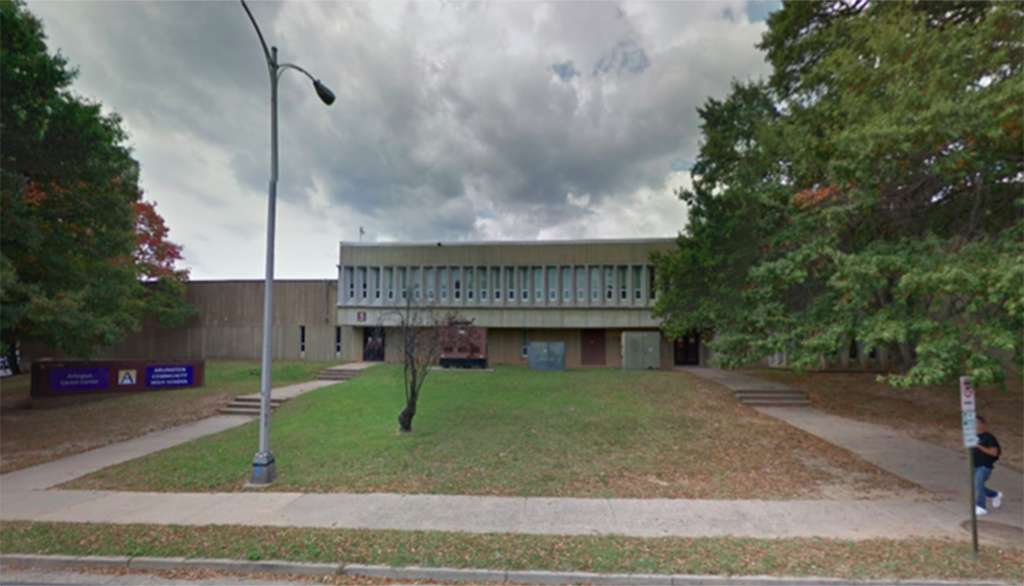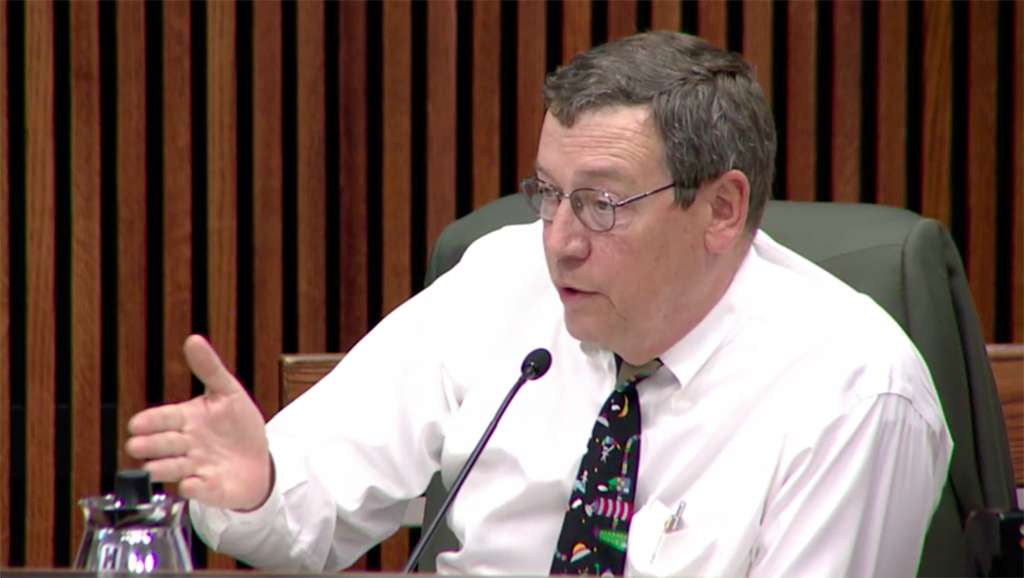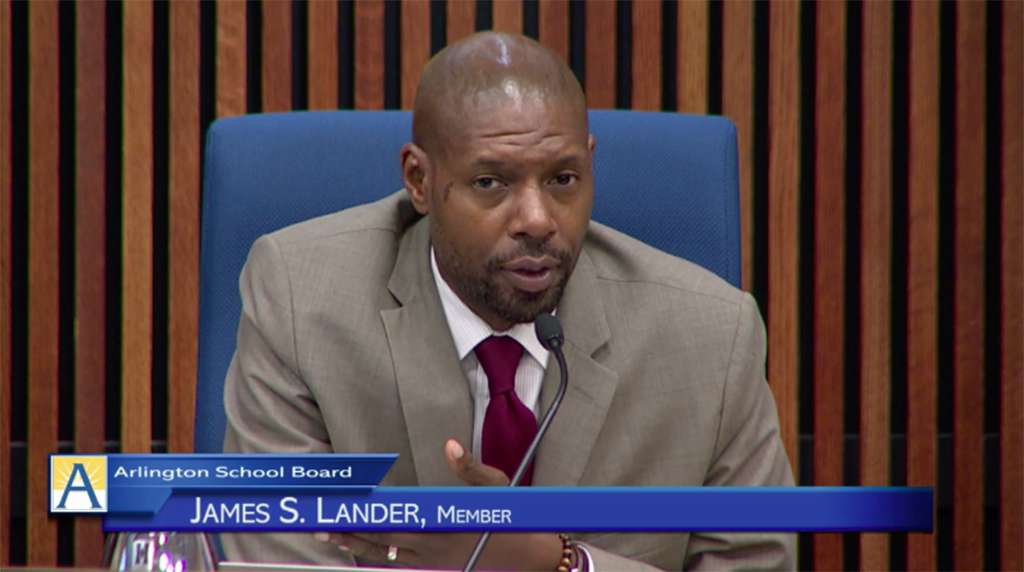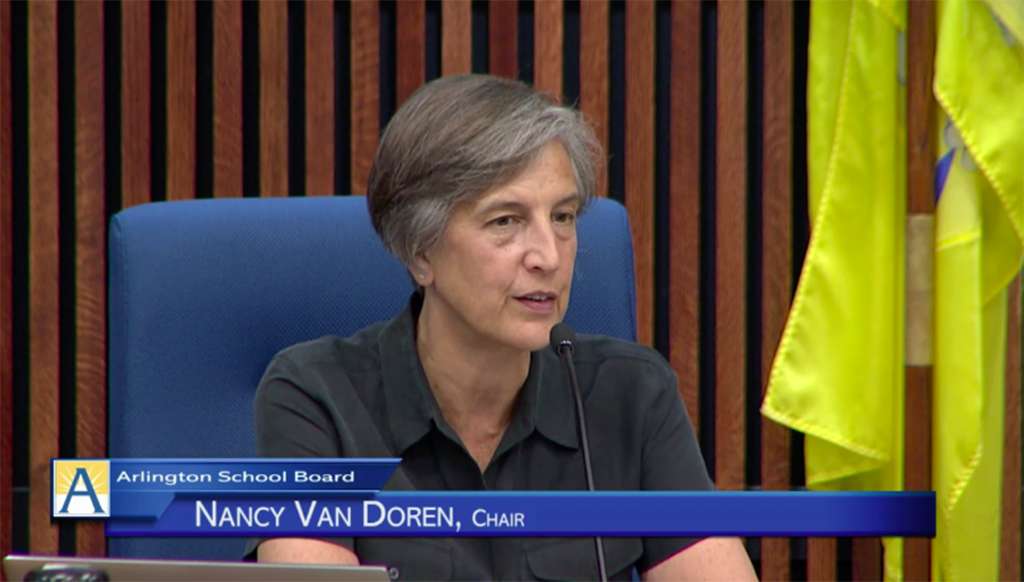Arlington Public Schools will add 1,300 high school seats across the Education Center and the Career Center after the School Board approved the so-called “hybrid option” at its meeting Thursday.
The option, put forward by Superintendent Patrick Murphy last month, would add 500-600 seats to a renovated Education Center (1426 N. Quincy Street) by 2022, then add another 700-800 at the Career Center (816 S. Walter Reed Drive), which would get a renovation and an addition. The County Board denied a request to designate the Education Center as a historic district last month.
Murphy’s proposal had not been among the original short list of three finalists for the new high school site, but Board members said it would balance the need for more seats with limited building space, and make use of what already exists.
“We cannot allow this Ed Center site to lie fallow,” said Board member Reid Goldstein. “We go to the County Board every year and we tell them we need more: we need more money; we need more land. I’m a taxpayer too. We cannot have a site that could hold students going unused.”
By December, Murphy must also provide a list of recommendations for the Education Center, including its cost, any boundary changes needed and educational programming. He must make similar recommendations for the Career Center no later than May 2018.
In addition to their vote in favor of the plan, Board members directed Murphy to include options for a fourth comprehensive high school, including programming, cost and location, in APS’ 2019-2028 capital budget. Arlington currently has three comprehensive high schools: Washington-Lee, Wakefield and Yorktown.
“It’s not a blank slate,” said Board chair Nancy Van Doren. “We have eight points we want answers to, we have a finite amount of money and we have a vision that says we’re going to need to potentially add onto those and make them into something even greater going forward. So we want to leave our options open, and one thing I think we’ve learned to do is not create buildings that aren’t flexible.”
The Board voted 4-1 in favor of the plan, with James Lander the lone dissenting vote. He said the plan was not the best use of the space at the Career Center, had safety concerns around traffic on S. Walter Reed Drive and worries about locating high school students close to Patrick Henry Elementary School.
“If you know someone with 40 acres in Arlington who is willing to sell to the school system, I would be happy to negotiate that,” Lander said. “Until then, we have to utilize the space effectively that we have now, and we have to think about what our needs could be potentially down the road. I think this site could be better used than just 600 seats.”
The perceived lack of consultation with nearby residents on the new option came in for some criticism during public testimony. Maria “Pete” Durgan, president of the Penrose Neighborhood Association, urged the Board to delay their vote to explore the hybrid model further.
“We feel disappointed in the way the solution came about because we don’t feel like we were presented with the various scenarios and had an opportunity on what would affect us greatly,” she said.
Goldstein raised similar concerns with the way the fourth option came forward, and challenged his colleagues to think about how they continue engaging with the community even as new ideas come forward late in the game.
“How do we do idea changes or option changes in a project like this when there isn’t enough time to extend the community engagement process?” he asked.
Board vice chair Barbara Kanninen said APS intends to get “right back out there” in the fall to begin discussing the new schools, and may look at convening something similar to the South Arlington Working Group that helped site a new elementary school.
“After tonight, we’re proceeding with two projects, and I’m excited about both of them, the Ed Center project, the Career Center site, but it’s no longer a hybrid,” Kanninen said. “These are two projects, just like we have several other projects on the books.”







